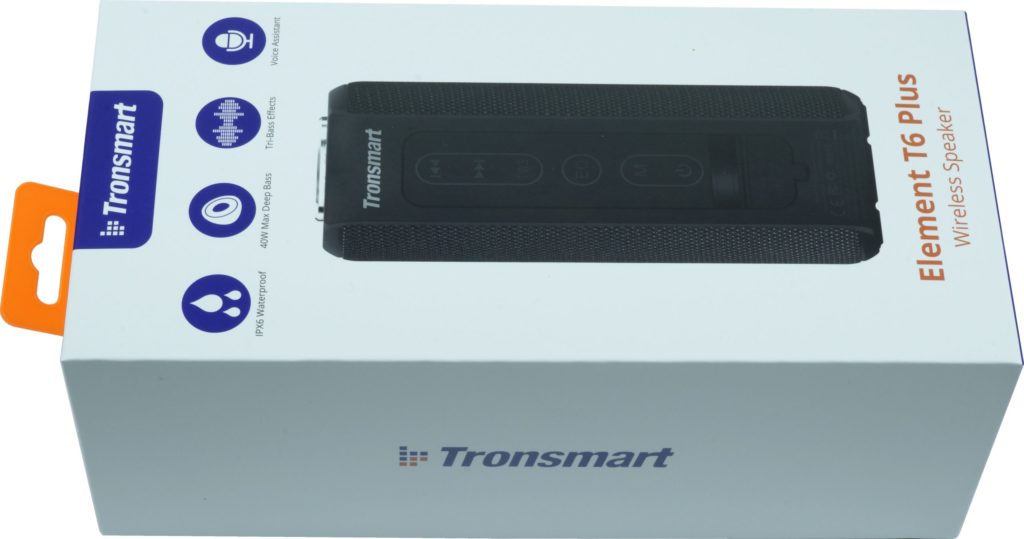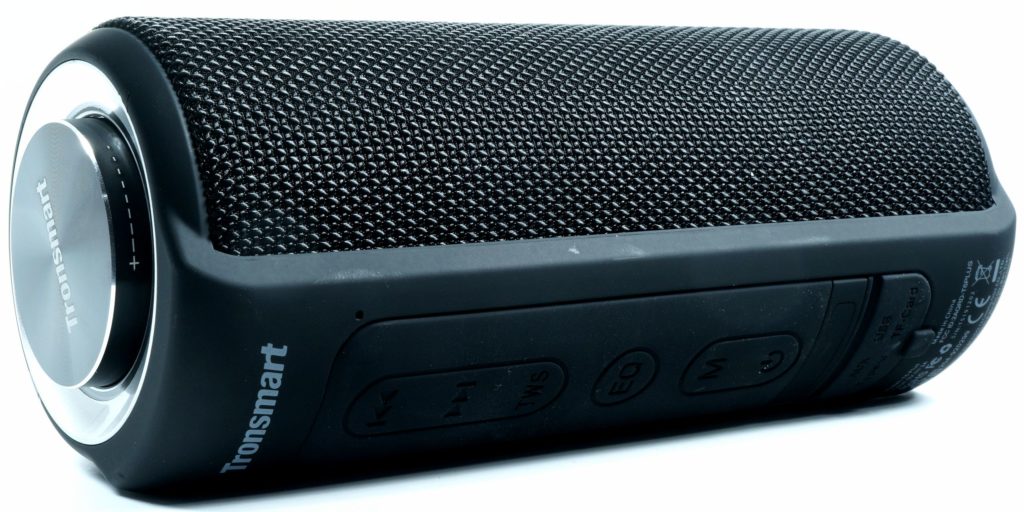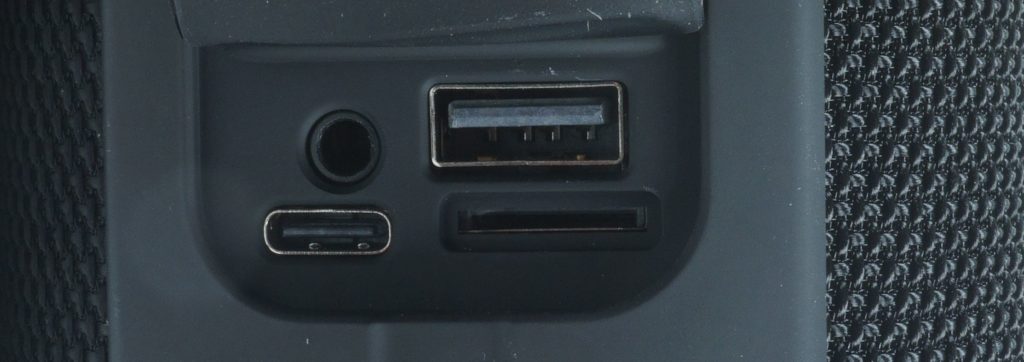The weather provokes the way outside and be it on the home balcony. You like to take such a mobile sound lover out with you, because with the pure natural noises it is not far away in the city anyway. Despite lockdown. But how you manage to go singing and swimming with a 66 Euro expensive speaker in the truest sense of the word, I even want to prove to you with a measurement, because you can tell a lot.
Now, of course, it is the case that I am almost concreted in with such patterns and i am therefore more inclined to pick out the better offers. But the Tronsmart Element T6 Plus is such a Janus-headed product with such crude propaganda in the data sheet that you really should write about it. Because if you spend so much money, you should also be sure of what you get in return. And that's exactly where I had doubts when I listened to the rehearsal. But always beautiful in turn…
Delivery
This section can be kept short, just as short as the USB Type C charging cable or the 3.5 mm stereo jack cable, both of which are nice three-way, but exhale plenty of cost-down feeling. At least 10 cm more could have been. For this, the charging socket relies on USB Type C, but unfortunately you do not have a suitable plug-in power supply. With the audio cable you can connect directly into the headphone output of a smartphone, if you still have one with a suitable socket. If so, this is even the better idea than Bluetooth.
Optics, haptics and functionality
It all started quite well, because the slightly water-protected housing (the manufacturer advertises with IPX6, i.e. the water protection during short-term immersion) actually makes a solid impression. The black lacquered metal grille is quite robust, the silicone rubber frame does not look labyrinthine in any way and the light metal application with LED backlit rotary knob makes something visually. In general, you should operate the part standing, i.e. button up and the passive bass woofer down.
That's exactly what you advertise with 360° sound, which is a smooth misrepresentation, because it is only radiated forward. For this purpose, the buttons are large-scale and have a perfect pressure point. This also applies to the button in the volume control and the rotary knob itself, which provides a tactile feedback but has no start and end points. For that, it then beeps at the full stop. The volume control has been decoupled from the smartphone, which is good in principle. Because many devices tend to high levels at the lowest levels, so that a real listening is hardly possible. If you really need full throttle, just turn both controllers and it's handy not to constantly pull the smartphone setting behind you in tow.
The buttons are all self-explanatory, but the built-in microphone is maximum average. The voice assistant, if it needs (and likes) it, can be revived by pressing the volume control for a longer period of time, although the speech intelligibility is rather modest and you often have to repeat what you actually wanted. This also applies to hands-free speech, which is not a real pleasure for the other person. And you could at least connect a second speaker to achieve real stereo. But then we would have reached far beyond the EUR 100.
The following picture of the manufacturer shows the individual occupancy once again at a glance and you can also see how easy the operation is.
Connectivity and battery life
The connections are also quickly added up and added up. Bluetooth 5.0 uses the latest standard, but the audio codecs are limited to what you hear (or listen to) not). That's why the still existing jack jack is a good choice when playing music. I will explain why this is the case. Then we see the Type C charging socket, an SD card slot and a Type-A jack, which can be used both as an output for use as a power bank and for a stick with MP3 files.
But I have to come back to Bluetooth. Here you use various energy-saving functions, as well as the hiding with too quiet passages, in order to hide the quite high basic noise. Unfortunately, this is already going in the direction of dropouts and choppers with very quiet parts. This effect is not so pronounced when directly applied via the cable. In practice, the range is barely more than 10 metres, even if the manufacturer specifies more.
The charging time until filling the two 3300 mAh batteries is quite heavy in practice with well over 4 hours, despite USB-C and a 65.-watt power supply also tested. In practice, the running time is 5-12 hours (depending on the volume) in the usual class. After all, you can also operate the loudspeakers directly during charging, which also gave me the opportunity to estimate the power consumption of the amplifiers. In the peaks it is up to 12 watts, but usually less.
In the end, you can probably tap on a solution that can emit a maximum of 5 watts per channel, which is also common in class, but miles away from the specified 40 watts. So far, by the way, everything was still fine and the mood was not too gloomy. Until I listened to a test and measured it afterwards. Because it's going to be exciting. Before that, however, the official data sheet is quickly on the eye:







































Kommentieren